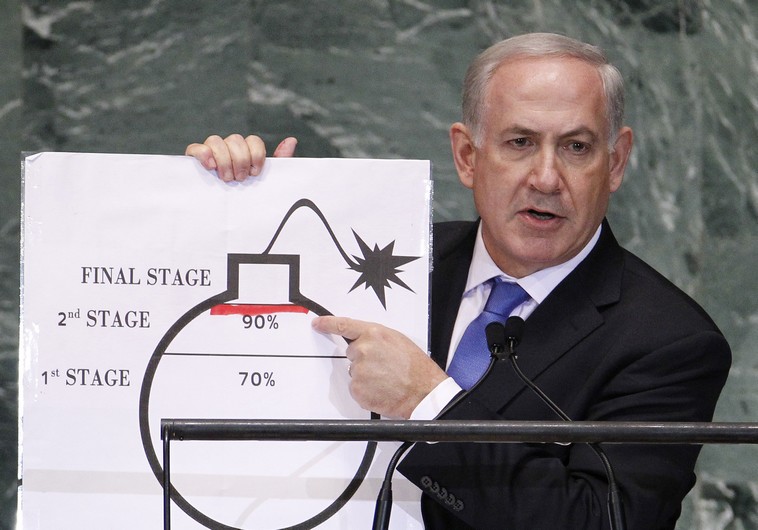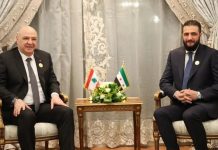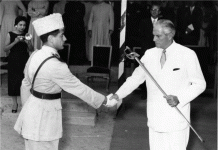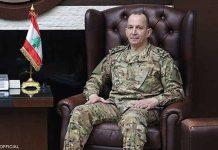A new face in the Iranian nuclear negotiations
Nov. 03, 2014/David Ignatius/The Daily Star
An intriguing new figure is gaining prominence in the Iranian government just as regional conflicts in Iraq and Syria intensify and nuclear talks with the West move toward a Nov. 24 deadline.
The newly prominent official is Ali Shamkhani, head of Iran’s national security council. He played a key role last summer in the ouster of Nouri al-Maliki as Iraq’s premier. In interviews over the last few weeks, Iraqi, Iranian, Lebanese, European and U.S. officials have all described Shamkhani as a rising political player.
“He is a person in the middle,” with close links to both President Hassan Rouhani and Supreme Leader Ali Khamenei, says Hossein Mousavian, a former Iranian official who now teaches at Princeton University and knows the leadership well. “Shamkhani can play an influential role in managing the crisis in the Arab world,” he argues, in part because he is from an Arabic-speaking region of southern Iran.
The political balance in Tehran is important as the talks come to a head. Iranian and U.S. officials have been dickering with different formulas that would limit Iran’s nuclear stockpile and centrifuges. The U.S. wants to sharply limit the enrichment program and thereby extend the time it would take Iran to “break out” and build a bomb.
Shamkhani’s rise is noteworthy because he appears to bridge the radical and moderate camps at a time when opinion in Iran is divided about a nuclear deal. Khamenei will have to bless any agreement made by Rouhani and Foreign Minister Mohammad Javad Zarif.
“In contrast to Iranian Foreign Ministry officials, Shamkhani is a former Revolutionary Guard [IRGC] commander who has the clout to challenge his former comrades,” argues Karim Sadjadpour, a leading Iran expert at Carnegie Endowment for International Peace. A European intelligence official agrees that Shamkhani may be “an honest broker” between Rouhani and Khamenei.
“Since this summer, Shamkhani has taken on a more prominent role in Iranian regional policy, especially in Iraq, which previously was the exclusive purview of the IRGC Quds Force Commander Qasem Soleimani,” explains a U.S. official who follows Iranian events closely.
“His star continues to rise,” the U.S. official says. But he cautions against assuming that Shamkhani’s new ascendancy means any diminution for Soleimani, who “remains firmly in charge of Quds Force activities” and whose “overall standing in Tehran does not seem to have tapered off.”
Shamkhani’s role in Maliki’s ouster was described by two Iraqi officials. They said the Iranian visited Najaf in July to meet with Ayatollah Ali Sistani, the Shiite religious leader, and carried back his message that it was time for the polarizing Maliki to go. At the time, the Iranians appeared to be holding out for Maliki or another pliant Iraqi politician, but they acceded in the eventual, U.S.-backed choice of Haider al-Abadi.
Shamkhani’s regional stature was also evident in a September visit to Beirut, where he floated the idea of Iranian support for the Lebanese military. Lebanese officials say such aid won’t be accepted, but it’s an interesting sign of how Iranian policy is working in parallel with that of the United States, which is the Lebanese Army’s main supplier of weapons.
A top Revolutionary Guard commander during the Iran-Iraq war, Shamkhani was defense minister under the moderate President Mohammad Khatami a decade ago; he then worked for Khamenei during the presidency of the fiery Mahmoud Ahmadinejad.
As the P5+1 negotiations head toward a climax, U.S. and Iranian officials have been holding back-channel talks to explore possible formulas for agreement. It’s a classic bargaining process, especially on the crucial issues of the number of centrifuges and the size of the stockpile of enriched uranium. Iran reportedly began by demanding 22,000 centrifuges, and the U.S. insisting on a limit of 2,000. That gap is said to have narrowed considerably, with Iran suggesting it keep the roughly 9,400 it’s now operating, and the U.S. hinting it might accept a cap of 4,000 centrifuges, for three to five years.
The U.S. might compromise on the number of centrifuges if the Iranians agreed to sharply limit their stockpile of enriched uranium, cutting it from about 10,000 kilograms to a few hundred. A U.S. requirement for any deal is close monitoring of Iranian activities.
Mousavian, the former Iranian official, suggests that if the two sides can’t agree by the deadline, they should ask the International Atomic Energy Agency in Vienna to limit Iran’s capabilities at what the IAEA determines is its “practical need” for civilian power. “They need a judge to decide,” he says.
**David Ignatius is published twice-weekly by THE DAILY STAR.






















